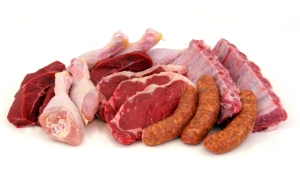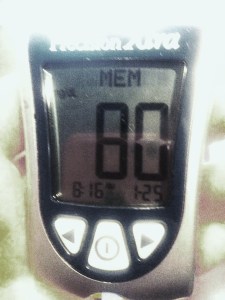1. Too Much Protein
Many “ketogenic diets” advocate a higher protein approach. Higher protein approaches are valid for weight loss but they aren’t classically “ketogenic” in that they aren’t promoting maximal ketone production and ketone metabolism. How do we know? Because in clinical applications of the ketogenic diet, anything below the classic ketogenic ratio the optimal therapeutic value of the ketogenic diet ceases (and we would argue it ceases being truly ketogenic.)
No one really knows for sure why the ketogenic diet is therapeutic for so many metabolic diseases including cancer, some strains of Alzheimer’s disease, Parkinson’s, and autoimmune disorders. There are several proposed mechanisms of action including increased mitochondrial function and biogenesis, the suppression of lactate, inherent properties in beta-hydroxy butyrate, improved astrocyte metabolism, and others. Whatever the case, there is some kind of unidentified, therapeutic “magic” in ketogenesis, and we believe that we shouldn’t just aim for weight loss but for maximal disease prevention.
Disease states are just normal physiological processes that have traveled too far in one direction or another. One might say that we are all more or less along the spectrum of metabolic disease simply by living the American lifestyle. So what is therapeutic is not just for those who are in active, progressive disease states, but for all those who seek improved health and disease prevention.
Having established this: “making ketones” is not the same thing as making ketones and using them optimally. Why is this important? Because KetoChix don’t care just about their skinny jeans they care about their skinny genes. This diet functions as epigenetic therapy, which assists the treatment and prevention of diseases that most impact quality of life and mortality. Too much protein provides a glucose stream (through gluconeogenesis) that competes with the use of ketones as a preferred source of fuel. There are a lot of arguments on the internet about this and the rate at which your body converts protein to glucose is going to be different based on your current diet, your overall health, and your genetics. Both protein and fat lower blood glucose compared to carbohydrate but protein impacts blood glucose at roughly 3xs the rate of fat. Just how much protein is going to affect your blood glucose is determined by your level of insulin resistance (measured by your insulin production and waist circumference). This is why people get into such mad arguments on the internet about protein–“it doesn’t affect my blood sugar!” It’s variable based upon your state of metabolic health. This is why KetoChix test blood glucose in order to determine where their protein threshold is. What’s awesome about the ratio is that fat and protein attenuate each other. If you keep the fat higher than the protein, you may find that you are able to eat MORE protein than if you keep the protein higher than the fat. What does attenuate mean? It means that fat lessens the blood glucose impact of protein, just as both protein and fat will attenuate the impact of glucose derived from carbohydrate.
Most people who get into regular blood glucose testing learn quickly that if their protein is too high, their blood glucose moves out of the ideal ketogenic range. The range that KetoChix find in their protein again is specific to them, their size, and their level of activity but most Ketochix find that their ideal protein level lies between 6 and 12 ozs of fatty protein sources per day.
2. Not Testing Lean Body Mass and Blood Glucose
KetoChix are body hackers. The ketogenic ratio is a guideline but the method of PLAN-MEASURE-PLAN will allow you to make a custom-designed keto plan for YOU. To do this you must establish regular testing and measurement intervals. We also suggest that those measures be maximally meaningful. To start, measure blood glucose (and ketones if you wish) each morning before eating and calculate both weekly and monthly averages. (BG measures are precise but not accurate–which means there are some deviation in the measures that will equal out over averages.) Still use your daily readings as a rough guide to test what you ate the day before but keep your eye on the weekly and monthly averages.
Don’t weigh (or at least, don’t weigh and only weigh.) Measure your body with a tape measure and choose an online body fat calculator to get your approximate BODY FAT PERCENTAGE. I can’t emphasize this enough. The scale will only frustrate you because keto stimulates adrenergic activity–which means, even in the absence of exercise you will gain some lean mass. This has a tendency to make the scale go up, especially in the beginning, or to make the losses appear minimal.
3. Ignoring Step One is Sleep
Step One is Sleep. End of discussion. This is the one people rebel against the most. It requires discipline and focus, and for some people major lifestyle changes that are difficult to take on. But nothing is going to fix your cortisol levels (and therefore blood sugar dysregulation) if you don’t get the proper sleep. This is perhaps the most under-exploited weight loss strategy of all. We lose weight while we sleep. If we do not go to sleep according to how the sun moves across the sky it makes it difficult to lose weight.



